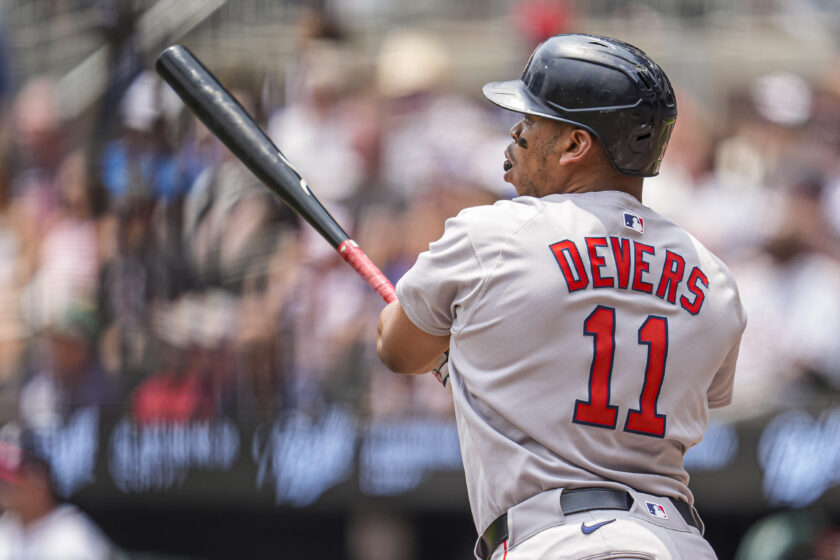New York Yankees: How James Paxton can continue his recent success

James Paxton has struggled to find much success with the New York Yankees this season, but he’s been able to pitch effectively of late.
When the New York Yankees acquired James Paxton last offseason, they expected him to continue to perform as a front-line starter. But, the complete opposite has happened for the majority of this season.
Paxton currently owns a 4.40 ERA, 1.410 WHIP, 4.37 FIP, 3.41 BB/9, 1.74 HR/9, .264 OPP AVG, and a 101 ERA+ through his 21 starts this season. All these numbers have been so uncharacteristic for Paxton compared to his previous seasons. Before this season, Paxton hadn’t recorded an ERA or a FIP over four runs in his career.
Paxton has also seen a major jump in his walks per nine innings this season as well. Over his last two seasons, Paxton recorded a 2.4 BB/9 and a 6.6% walk rate. Those impressive numbers are why it’s been such a surprise to see Paxton struggle with his command this season.
However, Paxton has made some adjustments since the beginning of August, and they’ve started to turn things around for the 30-year-old. Through three starts this month, Paxton has produced a 2.89 ERA, 0.960 WHIP, 2.89 BB/9, 9.64 K/9, 8.2% walk rate and a 27.4% strikeout rate.
While two of those three starts have come against the rebuilding Baltimore Orioles, these numbers are still very encouraging for Paxton. Walks have continued to be an issue for Paxton even with this improved success. But, he’s vastly improved his ability to reduce the number of hits surrendered over his last three starts.
Paxton has been able to significantly lower his OPP AVG and BABIP over this recent stretch. He’s recorded a .179 OPP AVG and a .186 OPP BABIP over his last three starts. All these improvements by Paxton are in large part because of his refined pitch selection over these last three starts.
So far this season, Paxton has thrown his fastball 61.8% of the time. He’s also thrown his cutter 21.7%, his curveball 15.4% and his changeup just 1% through his 21 starts this season. Paxton hasn’t been able to locate his fastball this season. As he’s given up 14 of his 21 home runs off it, and has recorded an 11.1% walk rate with it as well. Which is also why Paxton has only been using his fastball 51.7% during his three starts this month.
[sc name=”Yankees Center”]Paxton’s walk rate on his fastball this season is the highest of his entire career. He’s also been throwing his cutter a lot more this season which hasn’t been working out either. Paxton has increased his usage of his cutter by 7.3% this season. But, has also seen major increases in his OPP AVG, SLG, WOBA and a major decline in his strikeout rate with his cutter as well this season.
Those increases are why Paxton has been throwing his cutter less since the start of August. That translated into better results for Paxton and his cutter. Over his last three starts, Paxton has used his cutter on average 19.23% of the time. He’s also only given up just three hits off his cutter and has created eight strikeouts since then as well.
Reducing the usage of his cutter has allowed Paxton to throw more curveballs and changeups recently. Since the start of August, Paxton has been using his curveball at a 24.8% rate and his changeup at a 4.4% rate. Using his curveball more has now risen Paxton’s whiff rate on his curveball from 24.0% in July, to 37.8% during this month.
While Paxton’s changeup is certainly his least effective pitch, he has created a 42.9% whiff rate with it during this month. Which means Paxton will likely continue to utilize his changeup in small amounts. During Paxton’s time with the Seattle Mariners, he was most effective when he threw his curveball a lot more than his cutter.
That same pitch usage has also helped Paxton record these improved numbers during his three starts this month as well. Which means during the rest of the season, Paxton will need to continue to utilize his curveball around a 25% rate and his cutter at less than 20% rate.
However, Paxton will also need to find a way to locate his fastball more effectively during the rest of the season as well. If he can lower his walk rate closer to 7%, then that will further improve Paxton’s results with his fastball.
The Yankees will need the best version of Paxton this fall if they’re going to be successful in the playoffs. Paxton’s numbers this month are proof that the same dominant pitcher who recorded a 2.98 ERA in 2017 is still alive. But, Paxton will need to continue his pitch usage from this month during the rest of the season for him to return to that form.
[sc name=”Yankees Link Next” link=”https://elitesportsny.com/2019/08/14/brett-gardner-unofficial-captain-2019-new-york-yankees/” text=”Brett Gardner Has Taken On This Significant Role For The Yankees” ]





